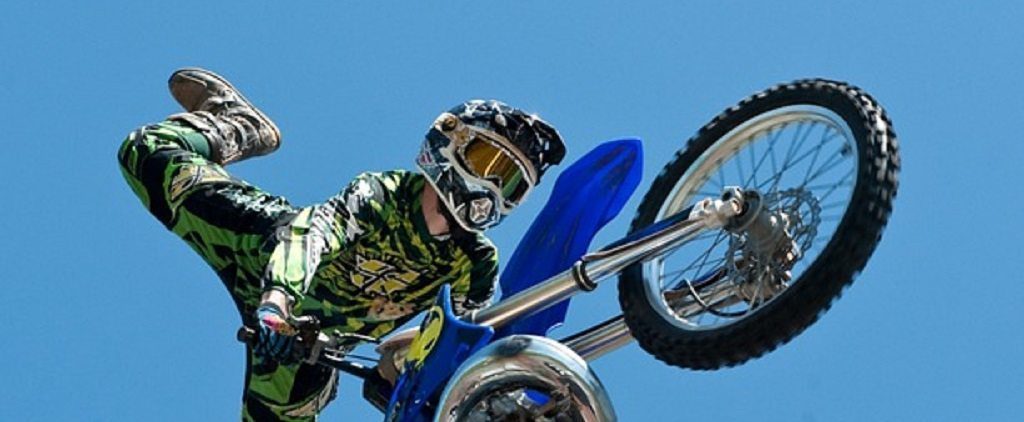[dropcap style=”font-size:100px; color:#992211;”]E[/dropcap]
ven when they wear protective clothing and headgear, US children engaging in the sport of motocross motorcycle riding can end up getting hurt.
Chainsaw juggling, shark jumping, bull running, rock catching and tiger wrestling also feature highly on the injury list.
Although, given that we’re talking about kids here, we could also add door closing, sock wearing and fork using to the list.
It’s a jungle out there.
A study at a Pennsylvania trauma center found competitive youth motocross athletes suffer potentially life-threatening injuries despite wearing helmets and other safety gear required on the sport’s popular rough-terrain race courses.
The abstract, “Injuries in the Competitive Pediatric Motocross Athlete,” will be presented at the American Academy of Pediatrics (AAP) 2016 National Conference & Exhibition in San Francisco. The 10-year, retrospective study identified 35 patients between ages 8 and 17 who were treated at a level I trauma center between 2004 and 2014 after being hurt while practicing or competing on two-wheeled dirt bikes at American Motorcycle Association sanctioned and regulated motocross tracks. The courses typically feature steep hills, jumps and sharp turns.
Most (85.7 percent) of the patients, who averaged 14 years in age, were injured during competitions. Despite the required use of helmets on the tracks, nearly half (48.6 percent) of them suffered concussions. Twenty-five patients (71.4 percent) had bone fractures or dislocations, two-thirds of which required surgery. Most had broken legs (18.8 percent broke their femur, 12.5 percent their fibula and 9.4 percent their tibia), collarbone (12.5 percent), or forearm (9.4 percent). One child died from his injuries.
legs (18.8 percent broke their femur, 12.5 percent their fibula and 9.4 percent their tibia), collarbone (12.5 percent), or forearm (9.4 percent). One child died from his injuries.
All 35 patients were wearing required safety equipment, including a helmet, shatter proof goggles, protective pants, long sleeve jersey, and protective boots at the time of injury, according to the abstract. More than half of injuries were related to a jump obstacle.
Abstract author Christopher Arena said information gained from this study will help give insight into steps that potentially can be taken to improve the safety of the sport. Future improvements such as equipment design, track regulations or allocating appropriate medical resources likely will benefit the sport in ways similar to highly studied pediatric contact sports such as football or wrestling, he said.
“As a former motocross athlete I realize the sport has potential for serious injury,” said Arena, a third-year orthopaedics resident. “Continued research into how these injuries occur, and how to prevent them, hopefully will improve the safety of this sport for future pediatric athletes.”
Source: Eurekalert/American Academy of Pediatrics

Some of the news that we find inspiring, diverting, wrong or so very right.




















